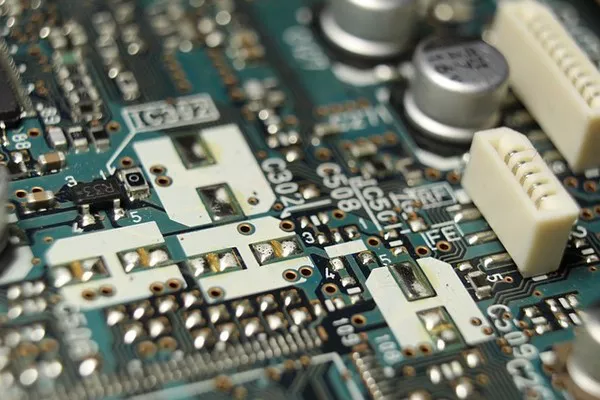Fire safety is paramount in any environment, particularly when it comes to managing electrical equipment. Misuse of fire extinguishers in the presence of live electrical equipment can result in severe injuries, damage to property, and potential fatalities. Therefore, understanding which fire extinguisher to use is critical. This article delves into the types of fire extinguishers appropriate for live electrical fires, offering a comprehensive guide for ensuring safety and efficiency.
Understanding Electrical Fires
Electrical fires fall under Class C in the United States, Class E in Australia, and Class E in Europe. These fires involve electrical equipment such as wiring, circuit breakers, outlets, and appliances. The primary hazard in these scenarios is the potential for electrical shock or electrocution if an inappropriate extinguishing agent is used.
Types of Fire Extinguishers for Electrical Fires
Several fire extinguishers are designed specifically or are suitable for tackling fires involving live electrical equipment. Here’s an in-depth look at these extinguishers:
1. Carbon Dioxide (CO2) Fire Extinguishers
Mechanism: CO2 extinguishers work by displacing oxygen around the fire and cooling the equipment.
Advantages:
- Non-Conductive: CO2 is non-conductive, making it ideal for electrical fires.
- Residue-Free: Leaves no residue, which prevents damage to sensitive electrical components.
- Effective: Efficiently suffocates and cools the fire.
Usage: They are suitable for computer rooms, server rooms, and other areas with significant electrical equipment.
Limitations:
- Limited Range: CO2 extinguishers have a shorter discharge range compared to others.
- Cold Discharge: The extremely cold discharge can cause thermal shock to delicate components.
2. Dry Powder Fire Extinguishers
Mechanism: These extinguishers use a powder that absorbs fuel molecules and interrupts the chemical reaction of the fire.
Advantages:
- Versatility: Can be used on various fire classes, including electrical fires.
- Non-Conductive: The powder is non-conductive, preventing electrical shock.
Usage: Effective for industrial environments where multiple fire hazards are present.
Limitations:
- Residue: Leaves a corrosive residue that can damage sensitive equipment and requires thorough cleaning.
- Visibility: The powder can obscure visibility, posing a risk in confined spaces.
3. Clean Agent Fire Extinguishers
Mechanism: These extinguishers contain halocarbon agents or other clean agents that interrupt the combustion process.
Advantages:
- Residue-Free: Leaves no residue, preventing damage to equipment.
- Non-Conductive: Safe for use on live electrical equipment.
- Environmentally Friendly: Modern clean agents are designed to have low environmental impact.
Usage: Ideal for data centers, telecommunications facilities, and other high-tech environments.
Limitations:
- Cost: Generally more expensive than other types of extinguishers.
- Refilling: May require specialized refilling services.
4. Water Mist Fire Extinguishers
Mechanism: These use fine misting technology to cool the fire and reduce oxygen levels.
Advantages:
- Non-Conductive: When used in fine mist form, it is non-conductive and safe for electrical fires.
- Minimal Damage: Causes minimal water damage to equipment.
Usage: Suitable for areas with a mix of electrical and other fire hazards.
Limitations:
- Limited Application: Not as versatile as other extinguishers for all fire types.
- Range: Limited discharge range.
Selection Criteria for Fire Extinguishers
Choosing the right fire extinguisher for electrical fires involves considering various factors:
1. Type of Equipment and Environment
Identify the types of electrical equipment present and their locations. High-tech environments like data centers might benefit more from clean agent extinguishers, while industrial settings may find dry powder more suitable.
2. Potential Residue and Cleanup
Consider the aftermath of using the extinguisher. Clean agent and CO2 extinguishers are preferred in environments where equipment integrity post-fire is crucial.
3. Training and Familiarity
Ensure that personnel are trained in using the specific type of extinguisher. Regular drills and training sessions can prevent mishandling during actual emergencies.
4. Cost and Maintenance
Factor in the initial cost and ongoing maintenance. While clean agents might be more expensive, their benefits in preserving equipment might outweigh the initial investment.
Safety Precautions and Best Practices
Using fire extinguishers on electrical fires requires adhering to certain safety precautions:
1. Assess the Situation
Before using an extinguisher, assess whether it is safe to do so. If the fire is too large or the environment too hazardous, evacuate immediately and call emergency services.
2. Cut Off the Power Supply
If safe to do so, turn off the electrical power supply to the affected equipment to reduce the risk of electrocution.
3. Maintain a Safe Distance
Stand at a safe distance while discharging the extinguisher. Follow the manufacturer’s guidelines for the correct distance.
4. Use the PASS Technique
Remember the PASS technique: Pull the pin, Aim the nozzle, Squeeze the handle, and Sweep from side to side.
5. Evacuate if Necessary
If the fire does not extinguish quickly or starts to spread, evacuate the area and wait for professional help.
See also What Are The Hazards Of Using Electrical Equipment
Conclusion
Selecting the right fire extinguisher for live electrical equipment is crucial in ensuring safety and minimizing damage. Carbon dioxide, dry powder, clean agent, and water mist extinguishers each offer unique benefits and limitations. Understanding these options, along with proper training and safety practices, can significantly enhance fire safety protocols. Regular assessments and updates to fire safety plans are also vital, ensuring that the chosen extinguishers remain the best fit for the evolving technological landscape.
In summary, effective fire safety is a combination of the right equipment, adequate training, and proactive planning. By choosing the appropriate fire extinguisher and adhering to best practices, organizations can safeguard both their personnel and assets from the dangers of electrical fires.

